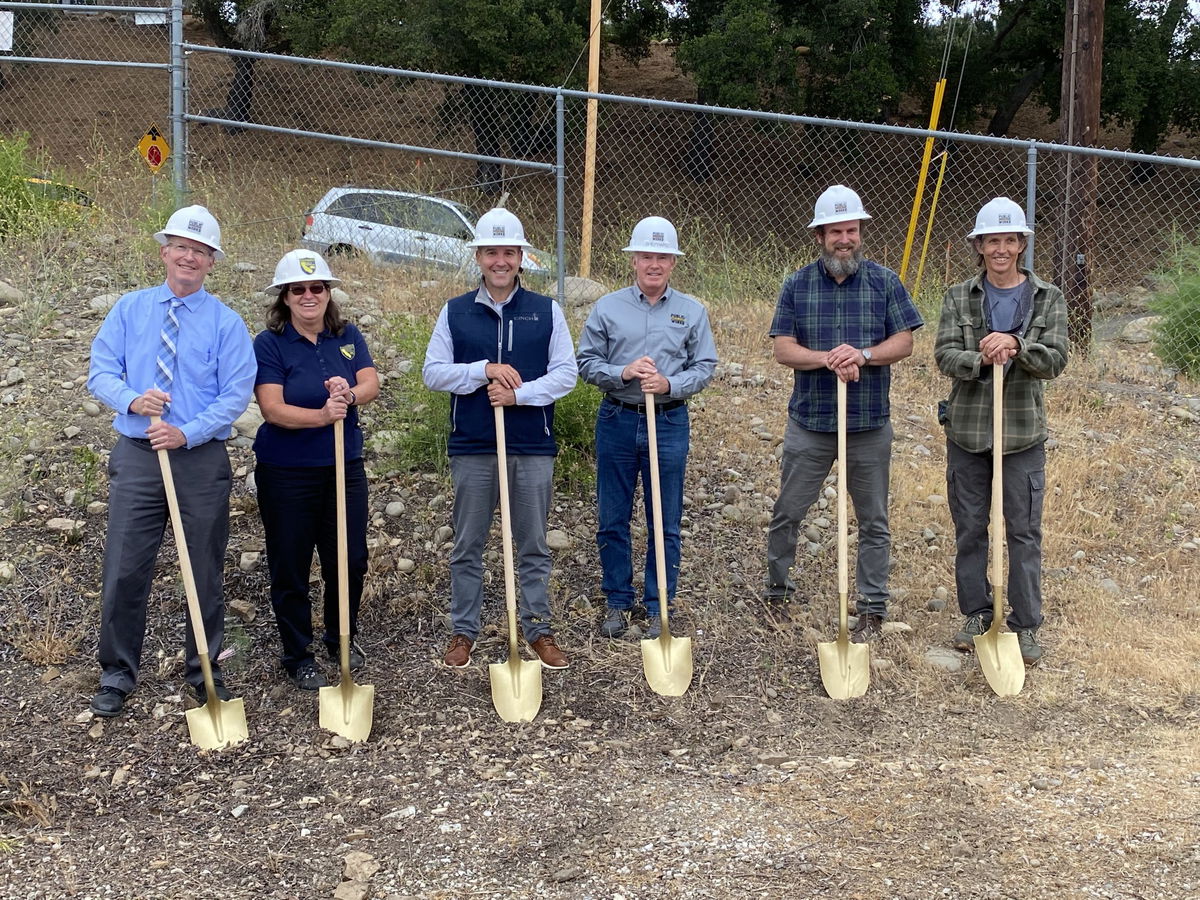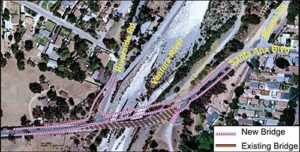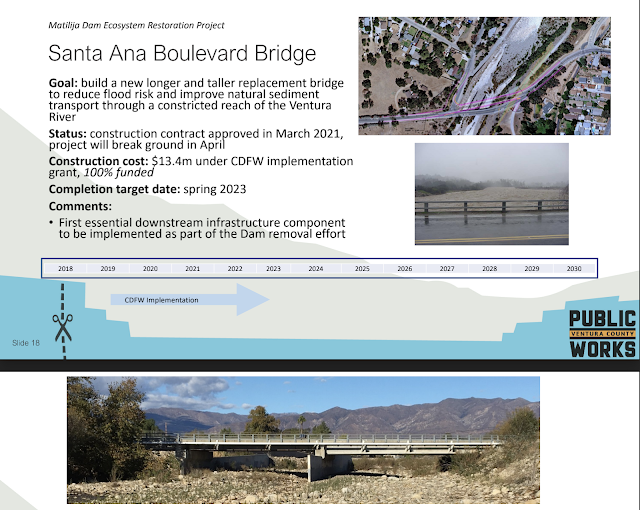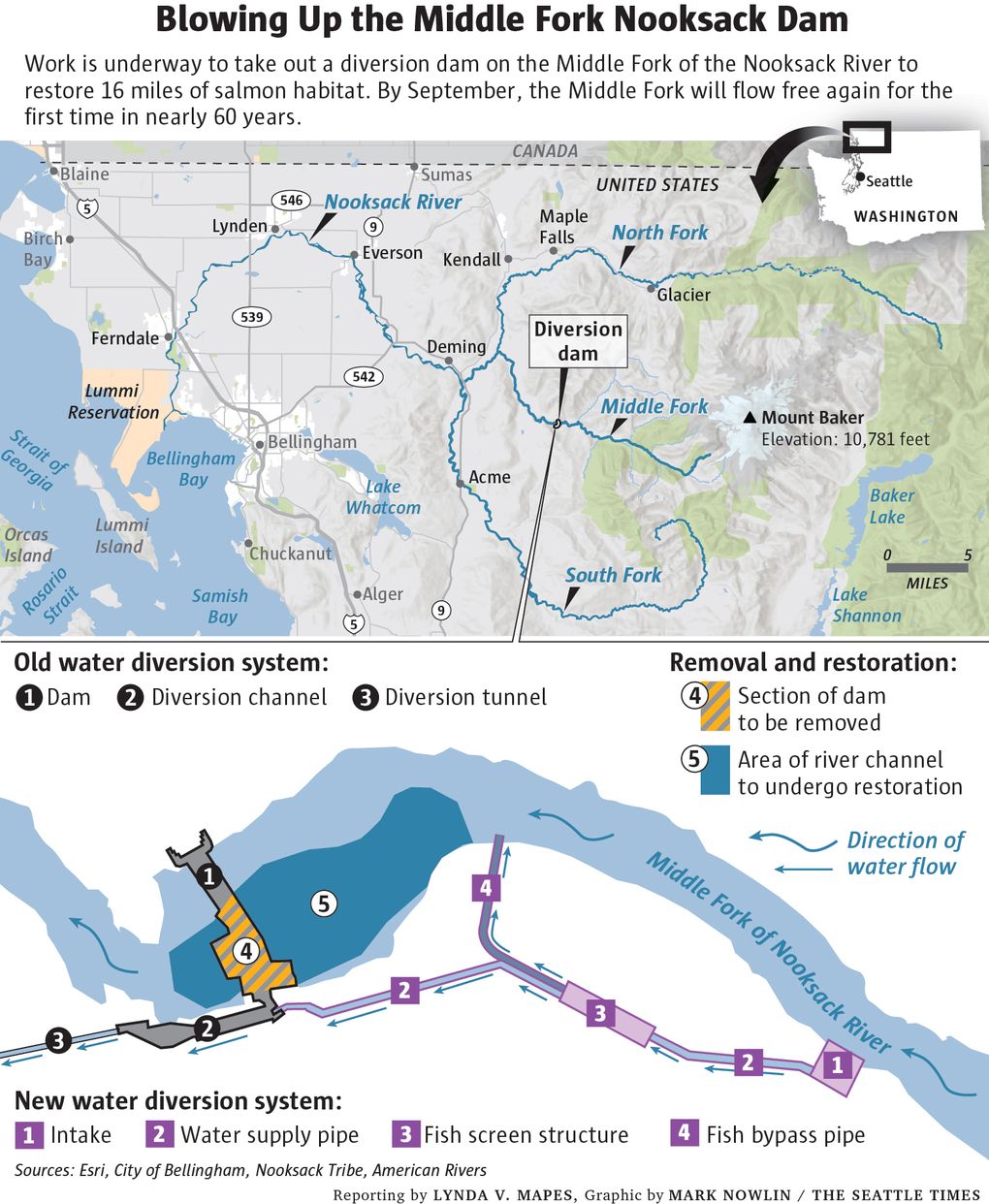The Ventura County Watershed Protection District (VCPWA – WP) has initiated environmental review on portions of the the Matilija Dam Ecosystem Restoration Project (MDERP.) The updated plan to remove Matilija Dam incorporates new information garnered from recent dam removal projects as well as details regarding proposed modifications to downstream infrastructure. Although environmental review was completed in 2004 as part of the Corps of Engineers planning effort, the VCPWA – WP has determined that preparation of a Subsequent Environmental Impact Report (SEIR) is warranted to evaluate the revised Project. The resulting SEIR analysis will be published next year.
The environmental review will analyze the impacts from the proposed dam removal and the reconstruction of downstream levees and bridges. Downstream components include the Camino Cielo Bridge, Live Oak Acres Levee, and Casitas Springs Levee.
Other major downstream components of the project have not yet been adequately designed for this environmental review, and will require future analysis. These include modifications to the Robles Diversion Dam, 3 miles downstream of Matilija Dam, and proposed flood protection for the Meiners Oaks neighborhood downstream of Robles.
More information on the environmental review process and the project may be found here: https://www.vcpublicworks.org/wp/mderp/
The Matilija Coalition submitted the following comments during the scoping period:
Removal of the Matilija Dam is necessary to reconnect the upper watershed for recovery of the federally endangered steelhead and other species of concern. Dam removal will also renew the flow of nutrients from the ocean and sediment to downstream reaches. In addition to these benefits, the dam currently impacts water quality and quantity and needs to be removed in a timely manner. The growing cost of the project is a barrier to implementation, so cost effective alternatives need to be considered.
Although an EIR is generally intended to address potential negative impacts of a project, the positive outcomes of dam removal should also be analyzed. For instance, it is currently assumed that sediment will have a negative impact to water supply downstream of the current dam site. However, the changes in the watershed following the Thomas Fire demonstrate that increased sediment transport can have a positive effect on water supply. After short term effects on shallow aquifer recharge during the first year after the fire, both surface flows and groundwater levels have responded favorably to the ecosystem changes in the mainstem Ventura river.
The following is an outline of issues and concerns that should be addressed in the SEIR:
1. Baseline conditions
a. Conditions in the watershed have changed significantly since the 2004 EIR, primarily due to the Thomas Fire which burned 95% of the upper watershed and resulted in significant sediment yield and transport downstream.
b. Matilija Reservoir capacity has been reduced to less than 100 Acre Feet, eliminating any meaningful remaining water supply benefit.
c. Total sediment accumulation behind the dam has increased, and the remaining reservoir storage will likely fill with sediment in the next large storm event.
d. The 50-year contractual agreement with Casitas Municipal Water District for operation of the dam ended in 2009.
e. Dam safety concerns have increased. Due to ongoing ASR concrete degradation the dam is categorized high hazard and could fail in an earthquake.
f. Required drawdown has eliminated remaining reservoir storage.
g. Alterations to dam operations since the reservoir was drained in July 2020 significantly impact downstream water quality.
h. The newly exposed fine sediment deposits upstream of the dam show signs of becoming a reservoir for invasive plants, particularly tamarisk.
i. Endangered steelhead populations were severely impacted by fire, and recovery in this watershed is significantly impaired by the presence of Matilija Dam.
j. Steelhead passage at Robles has improved with implementation of a fish ladder.
k. Habitat has improved as a result of invasive species control, including Arundo.
l. Habitat has improved in the mainstem Ventura River with increased sand and gravel deposits originating from effects of the Thomas Fire on the North Fork Matilija Creek.
2. Future without project
a. Sediment accumulation upstream of the dam has accelerated and coarse sediment transport over the dam crest will occur soon.
b. Water quality is impaired by the dam.
c. Endangered steelhead are threatened with extinction in this watershed.
d. Presence of the dam impairs water supply (see 3c below)
e. Existing development in the 100 yr floodplain requires improved flood protection with or without dam removal.
3. Future with project
a. Impacts of sediment discharge should be updated with new information. Since the initial EIR/EIS was developed several large dams have been removed yielding significant information on what may be expected downstream following a natural transport alternative. In every case, the predicted negative impacts did not come to pass, and the benefits far exceeded expectations.
b. Sediment transport and flood analyses should consider realistic scenarios for the assessment of downstream infrastructure.
c. The benefits of renewed sediment transport should be further investigated. Prior analyses focused on fairly abstract assessments of steelhead, riparian habitat, and natural processes. Recent post-fire observations of sedimentation in the Ventura river indicate that there are also tangible water supply benefits including enhanced surface flows and groundwater storage resulting from a restored riparian ecosystem.
4. Alternatives analysis
a. Each project component should include a “no project” alternative as baseline.
b. Mitigation for impacts of levees on riverine ecosystems should be developed in the EIR, including, but not limited to, vegetation, setback alternatives, and other means to minimize the negative effects. Lower cost green/grey and nonstructural alternatives (e.g., reinsurance policies, maintenance funds, etc) should be considered.
c. The cost of the Camino Cielo Bridge includes raising the existing road out of the 100-year floodplain. Cost savings may be had by allowing some level of flood risk during the initial sediment pulse since the few residents that use the road are accustomed to seasonal interruptions to access with the existing culvert crossing.
We hope these comments are helpful in developing the environmental analysis necessary for the removal of Matilija Dam.

































































